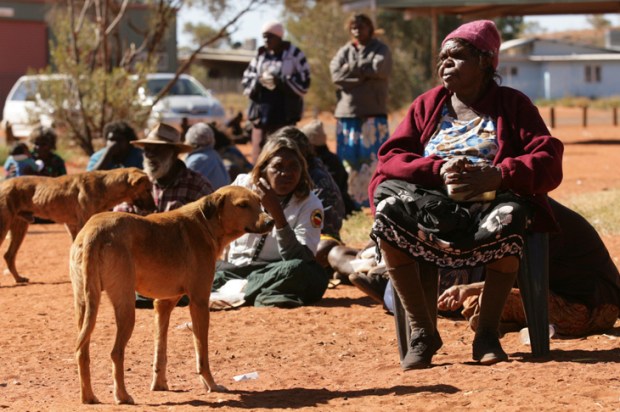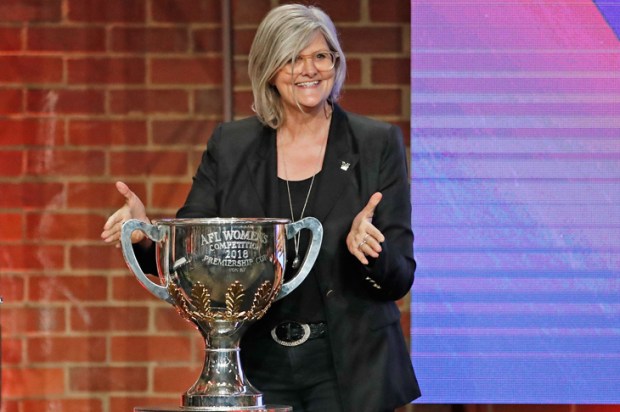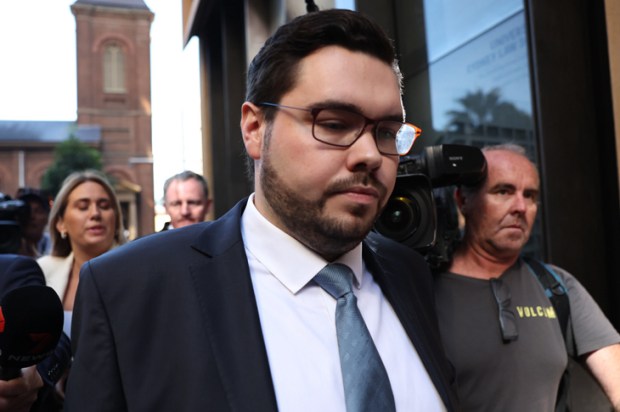Would you trust a car dealer who rebuffed your repeated requests for a test drive? Undecided voters pondering the upcoming Voice referendum might ask themselves a similar question. The Prime Minister is demanding we make the new body permanent before we have a chance to see it in operation. This is wholly unprecedented. Mr Albanese’s fear of informed debate can only be understood in its historical context: Labor’s run of 13 failed referendum questions (including the one they cancelled in 2013). Each time, a superficially innocuous idea – say ‘fair elections’ (1974, 1988), or ‘recognising’ local government (1974, 1988, 2013) – wilted under the glare of sustained public scrutiny. Having absorbed the lessons of these 13 failures, Labor approaches number 14 determined that, this time, voters should know as little as possible about what’s being proposed.
So it’s inconvenient for the Yes camp that something very like the Voice already exists: an ‘Aboriginal and Torres Strait Islander Elected Body’ (ATSIEB) has been operating in the Australian Capital Territory for 15 years. If voters knew about the ATSIEB, they might be tempted to take its abject failure as a sign the Voice won’t help matters either.
‘Abject’ might seem a little harsh. But look at the numbers. ‘Closing the Gap’ data shows the ACT’s performance is middling at best. During the first decade of the ATSIEB’s existence, the national indigenous incarceration rate rose by a third. In the ACT it tripled. (It has since fallen a little to 1,642 per 100,000 in age-adjusted terms. For Canberrans generally, the comparable rate is 84.) As the body’s architect, former chief minister Jon Stanhope, told the Canberra Times recently, ‘Indigenous outcomes in the ACT are a disgrace.’
We needn’t take Stanhope’s word for it. Consider the views of indigenous Canberrans. ATSIEB voter turnout is difficult to calculate because there is no separate indigenous roll. (Instead, ‘liaison officers’ eyeball each voter at the polling booth and decide whether to challenge their indigeneity. Each challenge is then referred to a special panel. I’m not making this up.) But dividing the number of votes cast by the number of adult indigenous Canberrans reveals turnout of between five and 11 per cent. (For reference, ATSIC elections were estimated to attract around a fifth of eligible voters in contested wards.)
Most damning of all is the silence of the Yes camp. The body is not mentioned in the Referendum Council report; no trace can be found on the History is Calling or Yes23 websites. No ATSIEB representative sits on Mr Albanese’s Referendum Working Group. No one from ATSIEB appeared on the joint select committee’s panel of ‘existing Voice bodies’ on 1 May. The ACT government avoids consulting it. Academics have shown no interest in evaluating it.
So this ‘elected body’ is regarded as a failure by its architect, 90 per cent of its constituents and the very people demanding something similar be permanently enshrined in the Constitution.
There is of course a risk that widespread discussion of the ATSIEB might drag the whole Voice debate into the sordid realm of evidence-based policy. But if we’re prepared to take that risk, at least three lessons can be drawn, none especially appealing to the Yes camp.
First, a representative organ entrenched in the state apparatus becomes complacent and passive. (Indeed, most members have day jobs as ACT public servants.) The ATSIEB’s last inquiry submission was in 2016. Since being elected nearly two years ago, the current members have failed to hold a single public hearing. The body has published no reports of any kind since October 2020. The lesson for a national Voice is clear: if a legislated body could fall silent so soon, how much more stultifying would be the security of constitutional entrenchment?
The second lesson is that a purely advisory body can only ever make governments talk the talk. On paper, the great strength of the ATSIEB model is that it can summon senior public servants to answer questions. But the transcripts show how little this means in practice. Take for example the ATSIEB’s attempt to discover how the government was tracking progress towards its own target of reducing ‘experiences of racism and discrimination’ by 80 per cent. It soon emerged that no one was actually counting, making any reduction impossible to measure.
Asked to explain, senior bureaucrats turned in a performance worthy of Yes, Minister. Said one: ‘On a practical level I have found that what we have been doing… is embedding the consideration of Aboriginal and Torres Strait Islander matters at the very start of what we do…. New officers are coming into environments where considerations of Aboriginal and Torres Strait Islander matters are core to what we are doing. They take into account the disproportionate effect of our policies and processes on Aboriginal people, which does not directly address reducing the figure. But it starts to build the culture around taking into account and considering all the effects that do come.’
No such figures were ever published. The lesson for those pinning their hopes on a national Voice is that official status does not in itself confer influence, even under the most progressive government in the country.
The final lesson concerns the limits of advisory bodies. Despite the recent tripling of the incarceration rate, on justice the ATSIEB’s sole substantive recommendation in 2020 was that the government devise some unspecified ‘new initiative that address[es] the specific issues from within the justice system for Aboriginal and Torres Strait Islander people’.
We outsource to politicians the kind of ugly trade-offs we’d rather not make ourselves. In Central Australia, Labor has tried to pretend there is no trade-off between individual freedom and public safety, with predictably disastrous results. Electoral reality will eventually force them to make difficult choices for that region, one way or the other. But with no actual responsibilities, Voice members will always be incentivised to eschew the boring detail and duck the difficult questions.
Not unlike the Yes campaign itself.
Got something to add? Join the discussion and comment below.
Get 10 issues for just $10
Subscribe to The Spectator Australia today for the next 10 magazine issues, plus full online access, for just $10.
You might disagree with half of it, but you’ll enjoy reading all of it. Try your first month for free, then just $2 a week for the remainder of your first year.














Comments
Don't miss out
Join the conversation with other Spectator Australia readers. Subscribe to leave a comment.
SUBSCRIBEAlready a subscriber? Log in